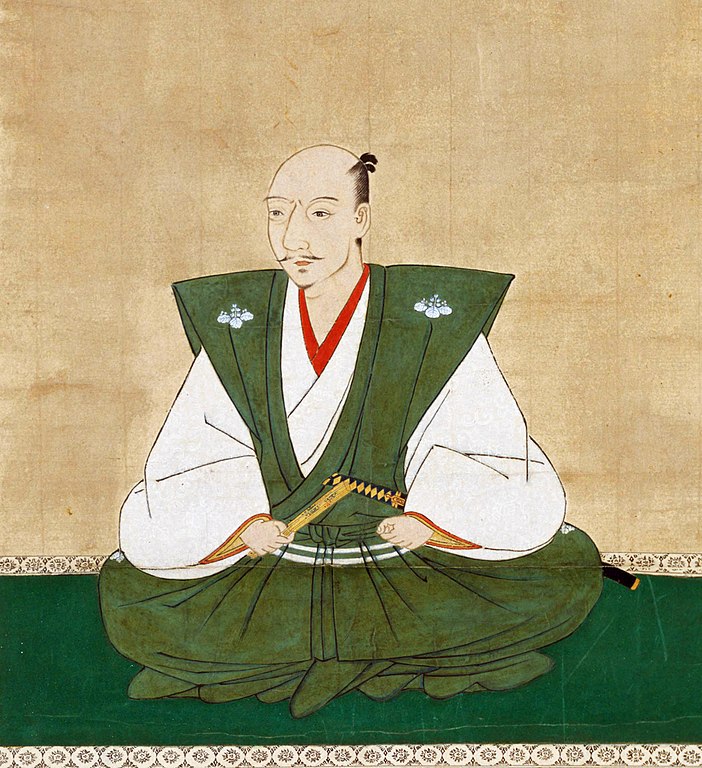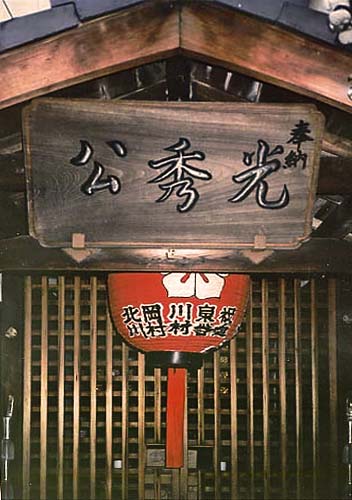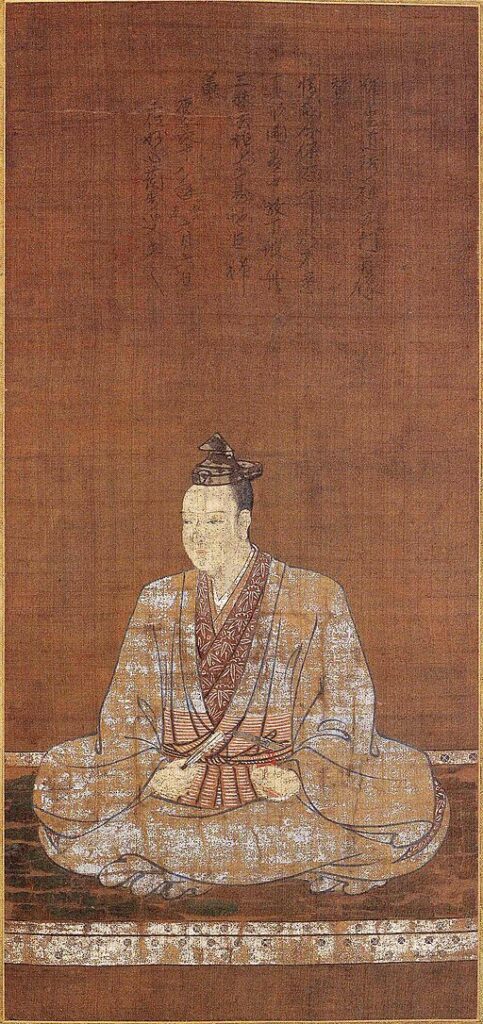Introduction
Akechi Mitsuhide is one of the most fascinating figures in Japanese history. Known for his dramatic betrayal of Oda Nobunaga, Mitsuhide’s life is filled with intrigue, ambition, and conflict. His actions at Honnō-ji in 1582 changed the course of the Sengoku period, marking a pivotal moment in Japan’s tumultuous era of warring states.
This blog post will delve into the life of Akechi Mitsuhide. We will explore his early years, his rise to power, and the motivations behind his infamous betrayal. By examining his brief rule and subsequent downfall, we aim to shed light on his complex legacy.
Understanding Mitsuhide’s story provides a deeper insight into the era he lived in. The Sengoku period was a time of constant upheaval and shifting alliances. Mitsuhide’s actions were a product of this turbulent environment, reflecting both personal ambition and broader political dynamics.
Join us as we journey through the life of Akechi Mitsuhide, a man whose legacy continues to captivate historians and enthusiasts alike.
Early Life
Akechi Mitsuhide was born in 1528 near Kyoto, Japan, into a family with a strong samurai heritage. His early years were shaped by the values and traditions of the samurai class, which emphasized loyalty, honor, and martial skill. Mitsuhide’s family, although not among the most powerful, had a respected lineage that traced back to the Toki clan.
From a young age, Mitsuhide was trained in the ways of the warrior. His education included not only martial arts and strategy but also the cultural and intellectual pursuits typical of samurai upbringing. This balanced education helped him develop into a well-rounded individual, capable of both combat and diplomacy.
Mitsuhide’s early career saw him serving under various local daimyos, gaining valuable experience and honing his skills in military leadership. These formative years were crucial in shaping his understanding of the complex political landscape of the Sengoku period. It was during this time that Mitsuhide learned the importance of both loyalty and ambition, traits that would later define his actions.
In the 1560s, Mitsuhide’s path crossed with that of Oda Nobunaga, a rising power in the region. Recognizing Nobunaga’s potential, Mitsuhide entered his service, marking the beginning of a new chapter in his life. This decision would set the stage for his future rise to power and his eventual dramatic betrayal.
Rise to Power

Joining Oda Nobunaga
Akechi Mitsuhide’s rise to power began when he joined the service of Oda Nobunaga in the 1560s. At that time, Nobunaga was rapidly expanding his influence and consolidating power in central Japan. Mitsuhide’s decision to align with Nobunaga proved to be a turning point in his career, offering him opportunities to demonstrate his abilities on a larger stage.
Proving His Worth
Under Nobunaga, Mitsuhide quickly proved his worth. He participated in numerous key battles and campaigns, earning a reputation as a skilled and reliable commander. His strategic acumen and loyalty did not go unnoticed by Nobunaga, who increasingly entrusted him with significant responsibilities. One notable achievement was Mitsuhide’s involvement in the successful Siege of Mount Hiei in 1571, where Nobunaga’s forces decisively defeated the powerful warrior monks of the Enryaku-ji temple complex.
Administrative Abilities
Mitsuhide’s talents extended beyond the battlefield. He was also a capable administrator, managing the territories he was assigned with efficiency and fairness. His governance of the Sakamoto domain, granted to him by Nobunaga, showcased his ability to balance military prowess with effective civil administration. This dual capability made him an indispensable part of Nobunaga’s expanding domain.
Challenges and Political Insight
However, Mitsuhide’s rise was not without its challenges. The Sengoku period was marked by constant political intrigue and shifting alliances. Navigating this volatile landscape required not only martial skill but also keen political insight. Mitsuhide managed to maintain his standing by aligning himself closely with Nobunaga’s vision of unifying Japan under a central authority, which often put him at odds with other regional powers.
Continued Loyalty and Contributions
Despite these challenges, Mitsuhide’s loyalty to Nobunaga seemed unwavering. He continued to serve faithfully, contributing to major military campaigns such as the Battle of Nagashino in 1575, where Nobunaga’s forces used innovative tactics to defeat the Takeda clan. Mitsuhide’s role in these victories further cemented his position as one of Nobunaga’s trusted generals.
Tensions Leading to Betrayal
As Mitsuhide’s influence grew, so did the tensions that would eventually lead to his infamous betrayal. The reasons behind his actions at Honnō-ji remain a subject of historical debate, but his rise to power undeniably set the stage for one of the most dramatic and consequential events in Japanese history.
The Incident at Honnō-ji
The Incident at Honnō-ji stands as one of the most shocking and pivotal moments in Japanese history. On June 21, 1582, Akechi Mitsuhide betrayed Oda Nobunaga, his lord and benefactor, in a dramatic coup that would forever change the course of the Sengoku period.
Background to the Betrayal
The reasons behind Mitsuhide’s betrayal of Nobunaga are complex and multifaceted. Several factors likely contributed to his decision to turn against his master. Personal grievances played a significant role; Nobunaga was known for his harsh and often humiliating treatment of his retainers, and Mitsuhide had suffered several public rebukes. Additionally, Mitsuhide harbored ambitions of his own and may have seen an opportunity to seize power.
Political motives were also at play. Nobunaga’s aggressive policies and his push to centralize power threatened many established factions, including the remnants of the Ashikaga shogunate, which Mitsuhide might have felt a lingering loyalty to. The combination of personal and political factors created a volatile mix, setting the stage for Mitsuhide’s dramatic move.
The Assassination
On the night of June 21, 1582, Nobunaga was staying at the Honnō-ji temple in Kyoto, having dismissed most of his guards and retainers. Seizing this opportunity, Mitsuhide led his forces in a surprise attack on the temple. The assault was swift and brutal. Nobunaga, realizing the hopelessness of his situation, committed seppuku to avoid capture.
The death of Nobunaga sent shockwaves throughout Japan. Nobunaga had been a central figure in the unification of the country, and his sudden demise left a power vacuum. Mitsuhide quickly moved to consolidate his control over Kyoto, declaring himself the new ruler.
Immediate Actions and Reaction
In the immediate aftermath of Nobunaga’s death, Mitsuhide sought to secure his position. He dispatched letters to various lords, seeking their allegiance and trying to legitimize his rule. However, the response was far from what he had hoped. Nobunaga’s loyal generals, most notably Toyotomi Hideyoshi, swiftly mobilized their forces against Mitsuhide.
Battle of Yamazaki and Mitsuhide’s Downfall
Just eleven days after the incident at Honnō-ji, Mitsuhide faced Hideyoshi’s forces at the Battle of Yamazaki. Hideyoshi, demonstrating his remarkable military acumen, outmaneuvered and overwhelmed Mitsuhide’s army. The battle ended in a decisive victory for Hideyoshi, and Mitsuhide was forced to flee.
Mitsuhide’s attempt to escape was short-lived. He was soon captured and killed by bandits, marking a swift and brutal end to his brief stint as ruler. The betrayal and the rapidity of his downfall have left a lasting impression on Japanese history, painting Mitsuhide as one of its most controversial figures.
Mitsuhide’s Brief Rule
Akechi Mitsuhide’s brief rule following the Incident at Honnō-ji is a period marked by frantic attempts at consolidation, political maneuvering, and ultimately, a swift downfall. After the dramatic betrayal and the death of Oda Nobunaga, Mitsuhide sought to establish his authority in a rapidly destabilizing situation.
Seizing Power
In the immediate aftermath of Nobunaga’s death, Mitsuhide moved quickly to secure Kyoto, the political heart of Japan. He proclaimed himself the rightful successor to Nobunaga and sought to gain the support of other influential daimyos and samurai. Mitsuhide sent out missives to various regional lords, urging them to recognize his new authority and promising rewards for their allegiance.
Mitsuhide’s control over Kyoto was crucial, as the city was not only a political center but also a symbolic seat of power. By taking control of the capital, he aimed to legitimize his rule and present himself as Nobunaga’s rightful heir. However, his actions at Honnō-ji had already alienated many, and his efforts to consolidate power were met with resistance and skepticism.
Efforts to Consolidate Power
Despite the initial shock and confusion, Mitsuhide faced significant challenges in solidifying his rule. Many of Nobunaga’s retainers and allies were deeply loyal to their fallen lord and viewed Mitsuhide’s betrayal as an unforgivable act. This loyalty to Nobunaga would prove to be a formidable obstacle for Mitsuhide.
Mitsuhide attempted to secure his position by offering incentives and trying to form alliances. He promised land and titles to those who would support him, but the response was lukewarm at best. The loyalty Nobunaga had cultivated among his generals and the swiftness of Mitsuhide’s betrayal left little room for trust or cooperation.
Opposition and Downfall
The most immediate and significant threat to Mitsuhide’s rule came from Toyotomi Hideyoshi, one of Nobunaga’s most trusted generals. Upon learning of Nobunaga’s death, Hideyoshi quickly concluded a campaign he was engaged in and marched his troops toward Kyoto with remarkable speed. Hideyoshi’s decisive action contrasted sharply with Mitsuhide’s frantic and somewhat disorganized attempts to consolidate power.
On July 2, 1582, just eleven days after the Incident at Honnō-ji, Mitsuhide faced Hideyoshi’s forces at the Battle of Yamazaki. The battle was fought near Kyoto, and Hideyoshi’s strategic acumen quickly became apparent. He outmaneuvered Mitsuhide, taking advantage of superior positioning and the loyalty of his troops. Mitsuhide’s forces were overwhelmed, and he was decisively defeated.
Following his defeat at Yamazaki, Mitsuhide fled the battlefield, but his attempt to escape was short-lived. He was soon captured and killed by bandits, marking the end of his brief and ill-fated rule. His death, coming so soon after his dramatic rise, underscored the precarious and volatile nature of power during the Sengoku period.
Legacy
Akechi Mitsuhide’s legacy is a complex and multifaceted one, marked by contrasting interpretations and enduring intrigue. His betrayal of Oda Nobunaga and the subsequent events have left an indelible mark on Japanese history, and his actions continue to be a subject of debate and fascination.

Historical Interpretations
Historians have long grappled with the motivations and implications of Mitsuhide’s betrayal. Traditionally, Mitsuhide has been portrayed as a traitor, a figure whose ambition and personal grievances led him to commit a heinous act of treachery against his lord. This perspective paints Mitsuhide in a negative light, emphasizing the dishonor associated with betraying a master, especially one as pivotal as Nobunaga.
However, other interpretations suggest a more nuanced view. Some historians argue that Mitsuhide may have been driven by a complex mix of personal and political factors. His loyalty to the Ashikaga shogunate and his possible desire to restore a more traditional form of governance could have influenced his decision. Additionally, Nobunaga’s often ruthless and autocratic methods may have pushed Mitsuhide to believe that removing him was necessary for the greater good.
Cultural Impact
Mitsuhide’s story has permeated Japanese culture, inspiring numerous works of literature, drama, and modern media. He has been depicted in kabuki and bunraku plays, where his character is explored in dramatic and often sympathetic ways. These cultural portrayals highlight the human aspects of Mitsuhide’s story, delving into his internal conflicts and the broader implications of his actions.
In modern times, Mitsuhide has appeared in novels, films, and TV dramas. These depictions cement his place in cultural consciousness. They often explore themes of loyalty, ambition, and betrayal. His story’s enduring relevance is clear. Video games and popular media also embrace Mitsuhide’s complex character. They present him as a multifaceted figure. His actions continue to provoke thought and discussion.
Influence on Japanese Cultural Identity
The legacy of Akechi Mitsuhide extends beyond historical and cultural interpretations. Indeed, his story has become a part of the broader narrative of the Sengoku period, a time that significantly shaped the foundations of modern Japan. Consequently, the themes of loyalty, honor, and the shifting nature of power during this era resonate deeply within Japanese cultural identity.
Furthermore, Mitsuhide’s actions, particularly the dramatic events at Honnō-ji, underscore the volatile nature of the Sengoku period. During this time, alliances were fragile, and the pursuit of power often led to dramatic and unforeseen consequences. Therefore, his legacy serves as a poignant reminder of the complexities of human motivations and the impact of individual actions on the course of history.
Conclusion
Akechi Mitsuhide’s life and actions are a captivating chapter in Japanese history. They embody the complexities and tumult of the Sengoku period. His rise under Oda Nobunaga, his shocking betrayal at Honnō-ji, and his brief, tumultuous rule contribute to a narrative rich with intrigue and dramatic reversals of fortune.
Mitsuhide’s story is one of profound contradictions. He was a loyal retainer who turned against his master, a capable administrator who faced overwhelming opposition, and an ambitious figure whose actions continue to spark debate. His legacy, viewed through various lenses, reflects the multifaceted nature of historical figures and the events that shape their destinies.
Understanding Akechi Mitsuhide provides deeper insight into the Sengoku period. It was a time of relentless conflict and shifting power dynamics. His actions at Honnō-ji changed the trajectory of Japan’s unification and left a lasting impact on the cultural and historical landscape.
Mitsuhide’s legacy endures in history and culture. It reminds us of the intricate web of motivations that drive human actions and their far-reaching consequences. His story, marked by ambition, loyalty, and betrayal, continues to captivate and challenge our understanding of this pivotal era in Japanese history.
Reflecting on the life and legacy of Akechi Mitsuhide, we see the enduring relevance of his story. It invites us to explore the depths of human ambition and the profound impact of individual actions on the broader currents of history. Through this exploration, Mitsuhide remains a figure of enduring fascination and significance.

